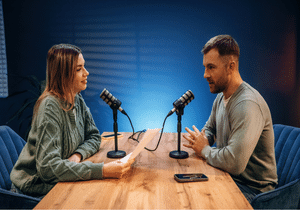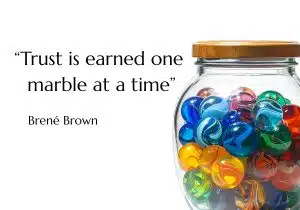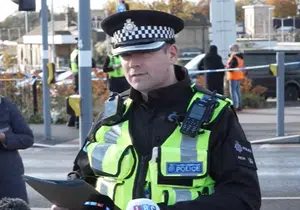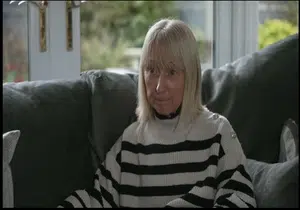 https://themediacoach.co.uk/wp-content/uploads/2025/12/Podcasts-feature.png
210
300
Eric Dixon
https://themediacoach.co.uk/wp-content/uploads/2016/04/the-media-coach-logo-300x137.png
Eric Dixon2025-12-10 08:50:312025-12-10 08:50:31How to Avoid Podfade: Five reasons why podcasts fail (and how to stop yours being one of them!)
https://themediacoach.co.uk/wp-content/uploads/2025/12/Podcasts-feature.png
210
300
Eric Dixon
https://themediacoach.co.uk/wp-content/uploads/2016/04/the-media-coach-logo-300x137.png
Eric Dixon2025-12-10 08:50:312025-12-10 08:50:31How to Avoid Podfade: Five reasons why podcasts fail (and how to stop yours being one of them!)At The Media Coach we are so passionate about communications training that we think about it constantly! We regularly monitor the news agenda to examine how other people and businesses communicate with the media. This includes their messaging to their body language and delivery style. Our communications trainers regularly contribute to The Media Coach Blog which you can read below.
 https://themediacoach.co.uk/wp-content/uploads/2025/12/Podcasts-feature.png
210
300
Eric Dixon
https://themediacoach.co.uk/wp-content/uploads/2016/04/the-media-coach-logo-300x137.png
Eric Dixon2025-12-10 08:50:312025-12-10 08:50:31How to Avoid Podfade: Five reasons why podcasts fail (and how to stop yours being one of them!)
https://themediacoach.co.uk/wp-content/uploads/2025/12/Podcasts-feature.png
210
300
Eric Dixon
https://themediacoach.co.uk/wp-content/uploads/2016/04/the-media-coach-logo-300x137.png
Eric Dixon2025-12-10 08:50:312025-12-10 08:50:31How to Avoid Podfade: Five reasons why podcasts fail (and how to stop yours being one of them!) https://themediacoach.co.uk/wp-content/uploads/2025/11/Feature-1.jpg
210
300
Lindsay Williams
https://themediacoach.co.uk/wp-content/uploads/2016/04/the-media-coach-logo-300x137.png
Lindsay Williams2025-11-26 08:12:232025-11-26 08:12:23A Behind-the-Scenes TV Cheat… and Why It Works
https://themediacoach.co.uk/wp-content/uploads/2025/11/Feature-1.jpg
210
300
Lindsay Williams
https://themediacoach.co.uk/wp-content/uploads/2016/04/the-media-coach-logo-300x137.png
Lindsay Williams2025-11-26 08:12:232025-11-26 08:12:23A Behind-the-Scenes TV Cheat… and Why It Works https://themediacoach.co.uk/wp-content/uploads/2025/11/FEATURE.jpg
210
300
Lindsay Williams
https://themediacoach.co.uk/wp-content/uploads/2016/04/the-media-coach-logo-300x137.png
Lindsay Williams2025-11-19 09:21:542025-11-19 09:41:11What Should I Do With My Hands?
https://themediacoach.co.uk/wp-content/uploads/2025/11/FEATURE.jpg
210
300
Lindsay Williams
https://themediacoach.co.uk/wp-content/uploads/2016/04/the-media-coach-logo-300x137.png
Lindsay Williams2025-11-19 09:21:542025-11-19 09:41:11What Should I Do With My Hands? https://themediacoach.co.uk/wp-content/uploads/2025/11/Trust-is-earned-one-marble-at-a-time.jpg
210
300
Lindsay Williams
https://themediacoach.co.uk/wp-content/uploads/2016/04/the-media-coach-logo-300x137.png
Lindsay Williams2025-11-12 09:25:092025-11-12 09:25:09A Jar of Marbles and the Power of a Simple Story
https://themediacoach.co.uk/wp-content/uploads/2025/11/Trust-is-earned-one-marble-at-a-time.jpg
210
300
Lindsay Williams
https://themediacoach.co.uk/wp-content/uploads/2016/04/the-media-coach-logo-300x137.png
Lindsay Williams2025-11-12 09:25:092025-11-12 09:25:09A Jar of Marbles and the Power of a Simple Story https://themediacoach.co.uk/wp-content/uploads/2025/11/Crisis-Spokespeople-Feature.png
210
300
Lindsay Williams
https://themediacoach.co.uk/wp-content/uploads/2016/04/the-media-coach-logo-300x137.png
Lindsay Williams2025-11-05 09:24:122025-11-05 12:14:03What Crisis Spokespeople Can Learn from the Huntingdon Train Statement
https://themediacoach.co.uk/wp-content/uploads/2025/11/Crisis-Spokespeople-Feature.png
210
300
Lindsay Williams
https://themediacoach.co.uk/wp-content/uploads/2016/04/the-media-coach-logo-300x137.png
Lindsay Williams2025-11-05 09:24:122025-11-05 12:14:03What Crisis Spokespeople Can Learn from the Huntingdon Train Statement https://themediacoach.co.uk/wp-content/uploads/2025/10/New-Feature-small.png
210
300
Lindsay Williams
https://themediacoach.co.uk/wp-content/uploads/2016/04/the-media-coach-logo-300x137.png
Lindsay Williams2025-10-29 08:51:232025-10-29 08:51:23Waitrose Shows the Perils of Being Tone-Deaf in the Social Media Age
https://themediacoach.co.uk/wp-content/uploads/2025/10/New-Feature-small.png
210
300
Lindsay Williams
https://themediacoach.co.uk/wp-content/uploads/2016/04/the-media-coach-logo-300x137.png
Lindsay Williams2025-10-29 08:51:232025-10-29 08:51:23Waitrose Shows the Perils of Being Tone-Deaf in the Social Media Age https://themediacoach.co.uk/wp-content/uploads/2025/10/Headlines-feature.jpg
200
300
Lindsay Williams
https://themediacoach.co.uk/wp-content/uploads/2016/04/the-media-coach-logo-300x137.png
Lindsay Williams2025-10-22 09:57:352025-10-23 18:55:18A New Dawn (Again): Why Clichés Still Make Great Headlines
https://themediacoach.co.uk/wp-content/uploads/2025/10/Headlines-feature.jpg
200
300
Lindsay Williams
https://themediacoach.co.uk/wp-content/uploads/2016/04/the-media-coach-logo-300x137.png
Lindsay Williams2025-10-22 09:57:352025-10-23 18:55:18A New Dawn (Again): Why Clichés Still Make Great Headlines https://themediacoach.co.uk/wp-content/uploads/2025/10/Feature-1.png
210
300
Lindsay Williams
https://themediacoach.co.uk/wp-content/uploads/2016/04/the-media-coach-logo-300x137.png
Lindsay Williams2025-10-15 09:59:572025-10-18 07:30:06Media Interview Prep Must Include Checking Social Media
https://themediacoach.co.uk/wp-content/uploads/2025/10/Feature-1.png
210
300
Lindsay Williams
https://themediacoach.co.uk/wp-content/uploads/2016/04/the-media-coach-logo-300x137.png
Lindsay Williams2025-10-15 09:59:572025-10-18 07:30:06Media Interview Prep Must Include Checking Social MediaThe Media Coach
+44 (0)20 7099 2212
COMPANY ADDRESS
Media Coach International Ltd
18-20 Canterbury Rd, Whitstable CT5 4EY
